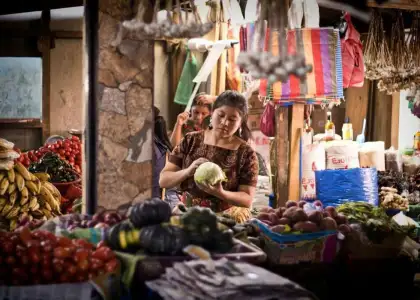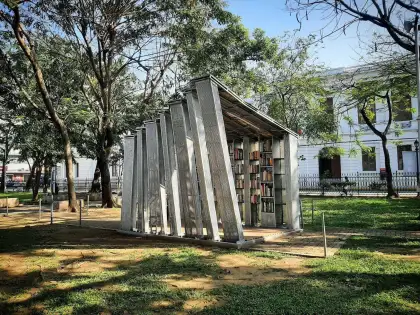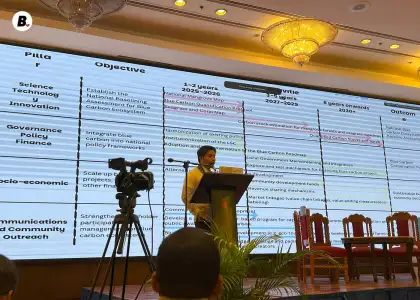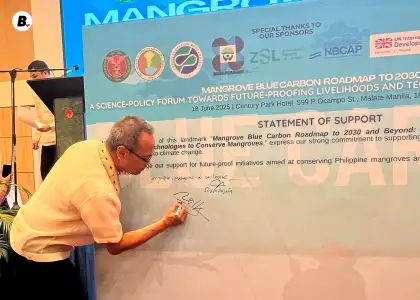Explainer: Why Do Rotational Brownouts Happen Especially During Summer?
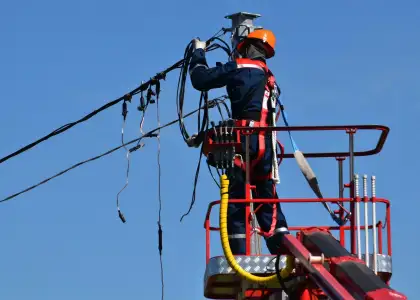
Summer is here again! A beach getaway or a visit to water parks is a must to keep the whole family cool amid the hot weather. On the flip side, summer is a struggle for homebodies or indoor enthusiasts with the prolonged daytime coupled with rising temperatures. Not to mention the rotational brownouts that throw us a curveball in this inferno-like heat.
This problem isn't exactly breaking news anymore, but have you ever wondered what's causing it?
Several residents in the Manila Electric Railroad and Light Company (Meralco) franchise area should anticipate service interruptions starting this April due to several reasons. These include line maintenance, pole installations, line reconstruction and reconductoring works, and relocation of facilities.
On Feb. 26, Meralco reassured its customers that it had sufficient electric reserves in anticipation of the heightened demand this summer, GMA News Online reported. According to the electric utility provider, South Premiere Power Corporation, a subsidiary of San Miguel Corporation secured the bid to supply the 1,200 megawatts (MW) baseload requirement of the power distribution company.
During the summer of 2020, just when the pandemic hit and almost everyone was cooped up at home, various areas were affected by power interruptions. There were 52 tripping events, of which 46 were momentary and six were sustained power outages, according to a report by Philstar on May 11, 2020.
These service disruptions impacted 608,253 customers within Metro Manila, Cavite, and Bulacan. According to Meralco, extreme heat was the main reason for rotational brownouts every summer as the heat index reached over 40 degrees Celsius (°C) exacerbated by higher usage of household appliances.
Based on the Philippine Atmospheric, Geophysical and Astronomical Services Administration’s (PAGASA) heat index information, the extreme warmth that we endure can be measured using the level of relative humidity and air temperature. It is classified into four categories: Caution (27-32°C), Extreme Caution (33-41°C), Danger (42-51°C), and Extreme Danger (52°C and above). To learn more about the possible effects of each heat level, click here.
Last March 28, Makati City recorded a “dangerous” heat index, reaching 45.1°C around 3:49 PM.
Moreover, there were nine more areas that also soared to the “danger” level of heat index on March 26. These include Roxas City in Capiz (44°C), San Jose in Occidental Mindoro (44 °C), Butuan and Iloilo City (both at 43°C), Ninoy Aquino International Airport in Pasay, Cotabato City, Pili in Camarines Sur and Puerto Princesa, Palawan (all sweltering at 42 °C), according to a report by Philstar.
Manual Load Dropping
Manual load dropping, also known as rotational brownouts, refers to a temporary drop in voltage as the demand for electricity surges, which strains the power supply to a critical level. Electric power distribution companies, like Meralco, opt to curtail supply to less critical customers, particularly residential areas, to ensure adequate supply on the grid for commercial and industrial sectors.
The National Grid Corporation of the Philippines (NGCP) serves as the system operator that determines the grid status into three categories – white (sufficient supply), yellow (low supply and demand nearly critical), and red (limited or poor supply).
The power demand is measured depending on the heat index which means that for every 1°C increase in temperature, an additional 100 MW of energy usage would likely be needed, the Department of Energy (DOE) said via Rappler in 2021.
As of April 3, the NGCP’s power situation outlook showed a total of 14,035 MW available for generating capacity versus 11,458 MW in system peak demand, with an operating margin of 2,577 MW.
Energy Conservation
Despite earlier reports this year about the country’s sufficient power supply, the DOE forecasted that Luzon’s power grid may reach the “Yellow Alert” warning this summer period, affecting hydroelectric power plants, ABS CBN News reported.
In light of this, citizens and business sectors are encouraged to become more proactive towards energy-saving practices. With the goal of stabilizing the energy supply, Senator Win Gatchalian authored Republic Act 11285, known as the Energy Efficiency and Conservation Act (EE&C Act) in 2018.
As stipulated in the act, it institutionalizes “energy efficiency and conservation plans and programs to secure sufficiency and stability of energy supply in the country to cushion the impact of high prices of imported fuels to local markets and protect the environment in support of the economic and social development goals of the country.”
Under the EE&C Act, private entities operating in energy-intensive industries or those with high electricity and fuel usage must adhere to a limited energy consumption of at least 100,000 kilowatt-hour equivalent (kWhe) or more.
Given the tropical climate of the Philippines, air conditioning and cooling appliances are indispensable to most households and businesses. The energy consumption of an air conditioner increases by approximately 23% with each degree increase. To reduce consumption rate, make sure to turn on the thermostat, which can save you up to 7% of energy. Moreover, your cooling system should match the room it serves because the imbalance leads to a surge in power usage of up to 110%.
For refrigerators and freezers, it is recommended to purchase those with inverter technology for enhanced cost efficiency, with potential savings of P700 or more per month. Furthermore, it is advisable not to overload your unit, as it generates more energy to keep stored items cool.
According to Meralco, experts suggest filling your unit to about 70% of its capacity to maintain optimal air circulation and reduce the risk of spoilage. For more energy-saving tips, click here.
Get the latest curated content with The Beat Asia's newsletters. Sign up now for a weekly dose of the best stories, events, and deals delivered straight to your inbox. Don't miss out! Click here to subscribe.
































